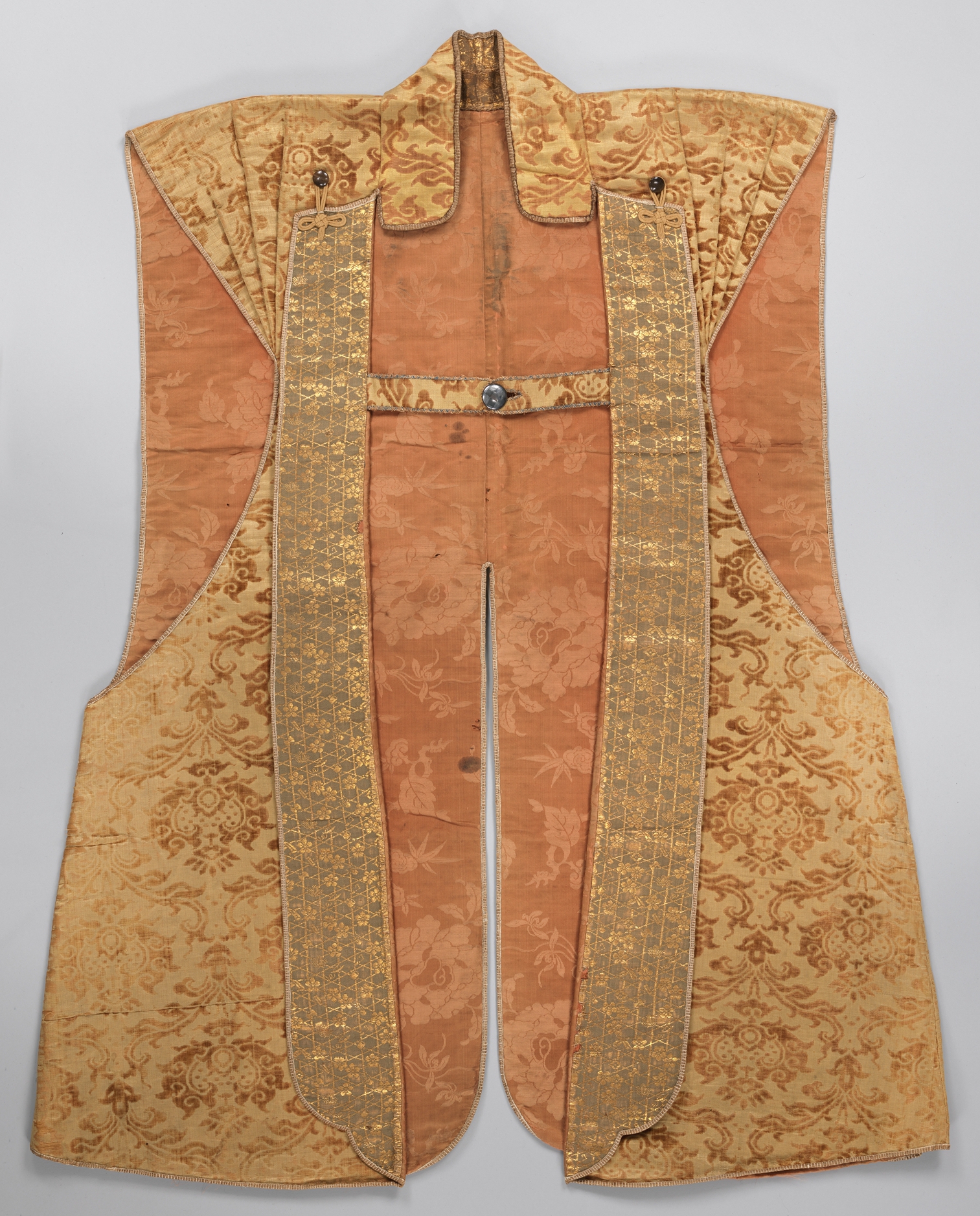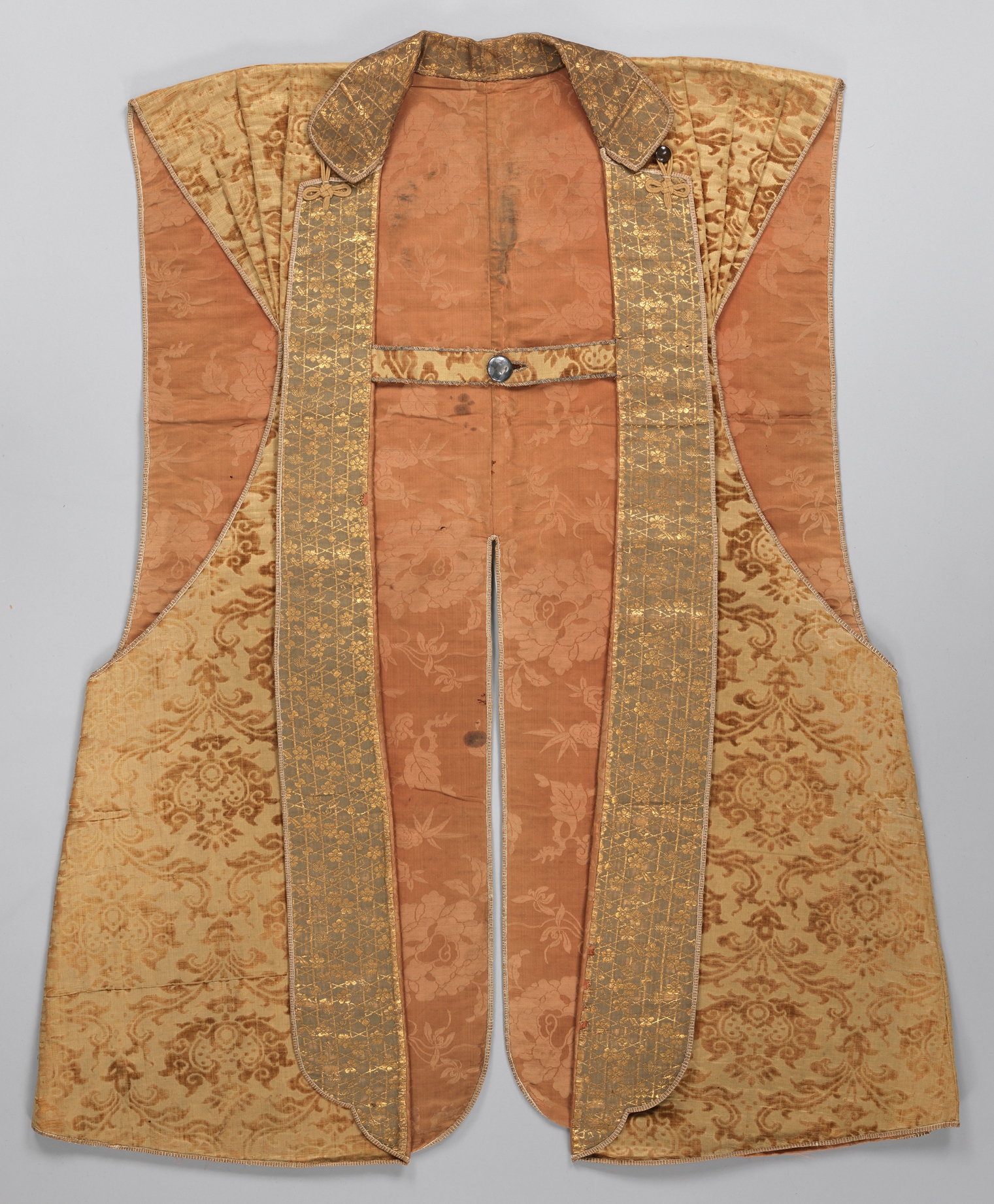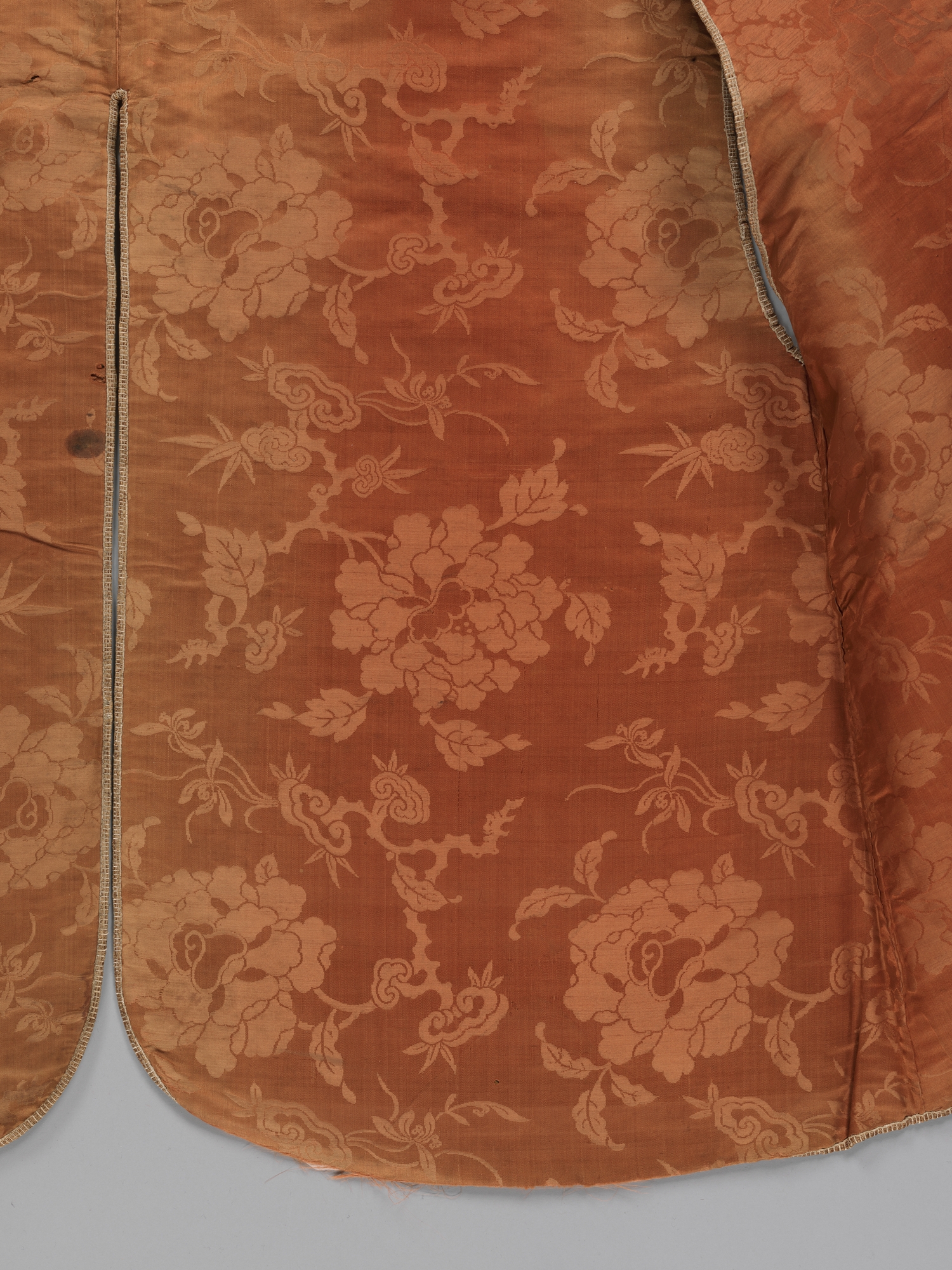Surcoat (Jinbaori)
Not on view
Samurai jinbaori were frequently made from expensive and flamboyant imported textiles like this Chinese silk velvet, which has a reddish pile pattern on a once vivid yellow background. The European-style “pomegranate” design features bilateral symmetry (mirror-imaged along a vertical axis) and a single direction of orientation. Patterns of this type—rare in Japan—frequently appear in European textiles of the sixteenth to seventeenth century. An exquisite Chinese silk damask lines the jinbaori, but its pattern is asymmetrical and features multiple orientations—traits more common in East Asian textiles. Both fabrics demonstrate the versatility of Chinese textile makers and the Japanese elite’s enthusiasm for such imports.
cat. no. 31
Due to rights restrictions, this image cannot be enlarged, viewed at full screen, or downloaded.
This artwork is meant to be viewed from right to left. Scroll left to view more.





